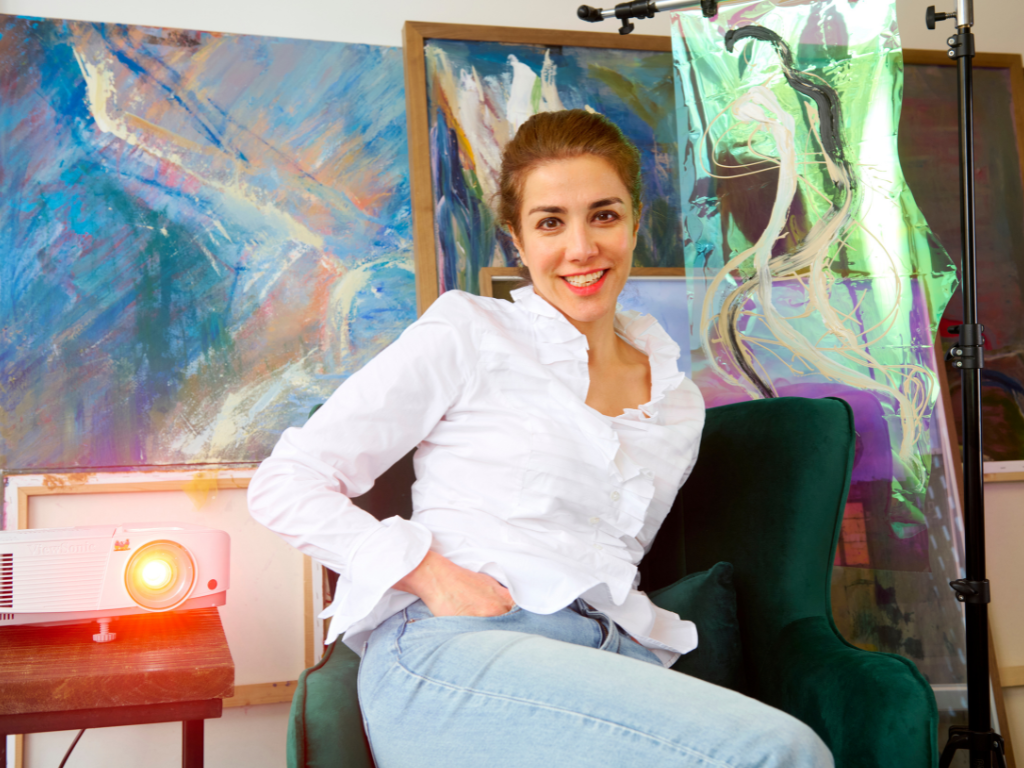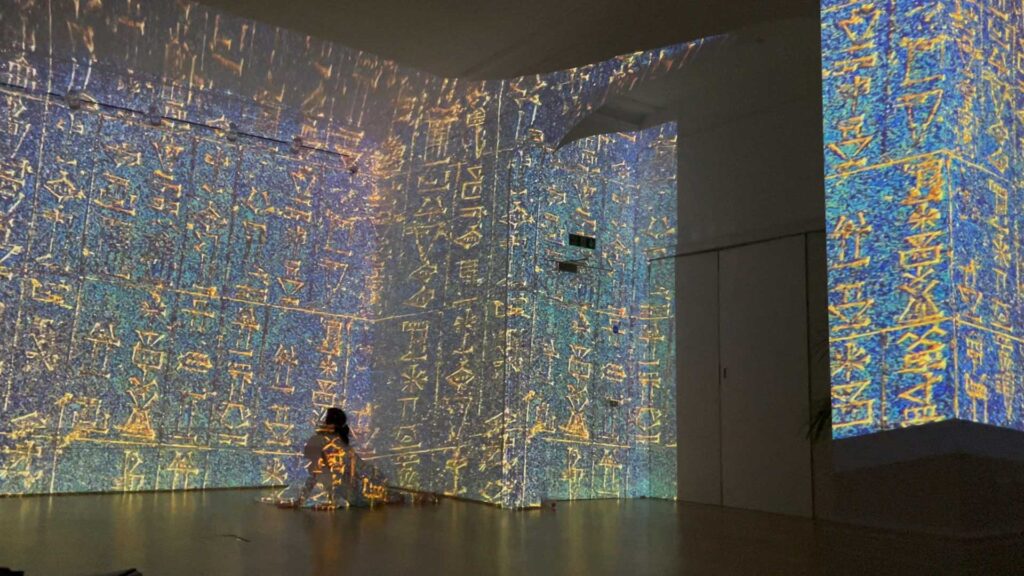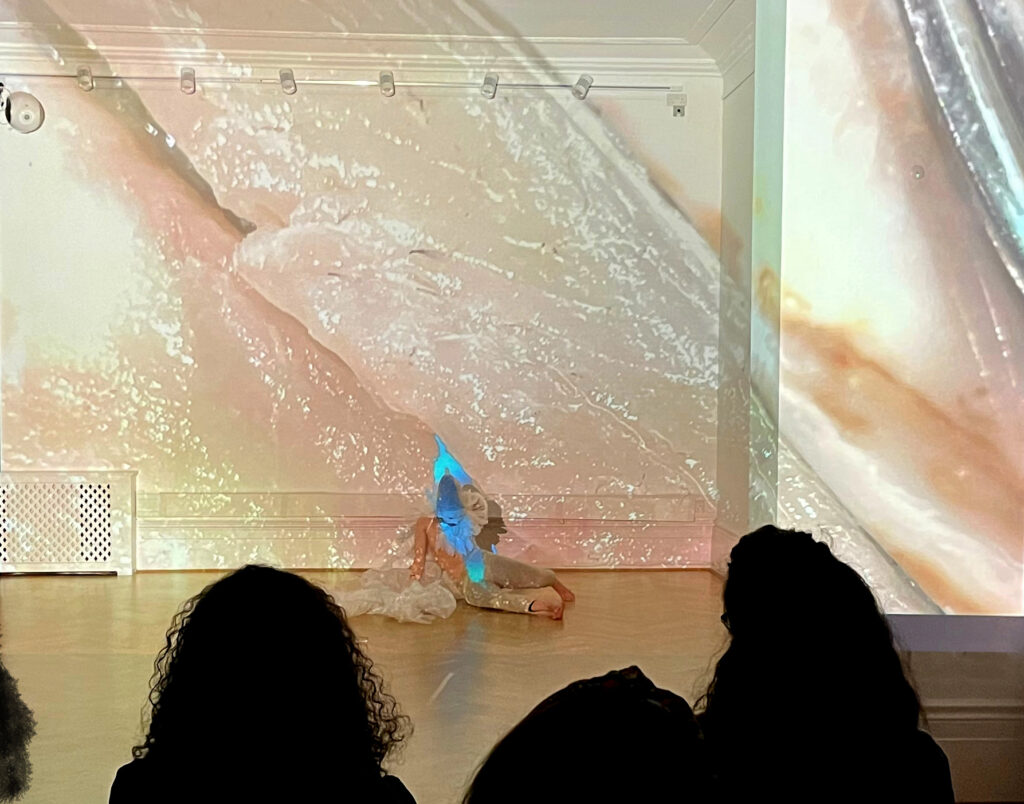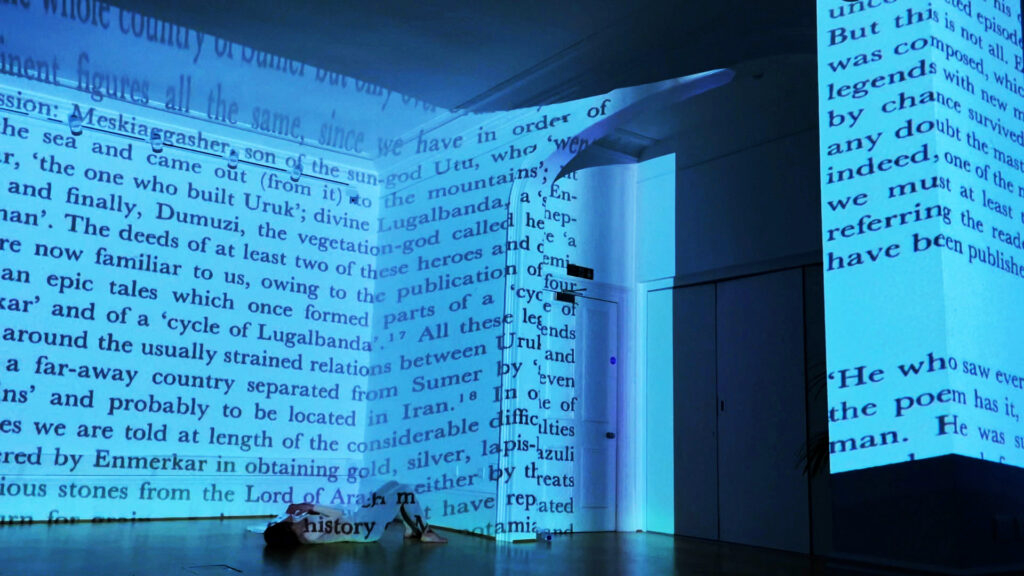From Architecture to Immersion: The Creative Journey of Estelle Asmaa Alanbari
By Argjenda Miftari
From architecture to visual art and immersive storytelling, Alanbari’s practice bridges disciplines to create experiences that resonate on both emotional and sensory levels. We caught up with her in her canal-side studio 115 based here at Great Western Studios, to hear more about her creative philosophy, her most meaningful projects, and the inspirations that continue to shape her work.

What’s your guiding philosophy when working with clients, and how did you develop it?
“My guiding philosophy is rooted in collaboration and emotional resonance. Whether I’m working with a cultural institution, a brand, or a theatre company, I see my role as both interpreter and amplifier – translating a core idea into an immersive experience that audiences can feel. This approach developed organically through working across disciplines: from the precision of spatial design, I learned how vital structure and flow are; from visual art, I gained a sensitivity to symbolism and mood; and from performance and film, I embraced the power of storytelling. Above all, I’ve found that the best work comes when there’s genuine dialogue with the client – when I listen closely, challenge gently, and build something bold together.”
By bringing together her experience across architecture, visual art, and performance, she creates projects that are layered, considered, and deeply engaging. Her emphasis on listening shows how important trust and dialogue are in her creative process.
Which client project has been the most meaningful to you, and why?
“Working with Milan-based furniture designer Piana was especially meaningful because it allowed me to align environmental responsibility with commercial storytelling in a tangible, impactful way. For the Milan International Furniture Fair, I created an immersive installation that not only showcased their sustainable furniture line but also made their commitment to eco-design impossible to ignore. The space was constructed using video projections and music to bring the majestic beauty as well as the urgency of the endangered forests and glaciars to the central Milan showroom. The result? Piana’s stand stood out for its aesthetic and for its message. It drew consistent footfall, generated meaningful press coverage, and positioned the brand as a forward-thinking leader in sustainable design. It was a clear example of how environmental values, when thoughtfully embedded in the creative process, can drive both awareness and commercial success.”
An inspiring reminder of how design can amplify sustainability messages while still capturing attention.

Can you share a challenging experience you faced in your journey, and how you overcame it?
“A particularly challenging but fulfilling project was designing a brand activation for a client with a very tight budget. This was overcome by spending as much time as necessary to find the most efficient use of funds.”
Proof that resourcefulness and imagination often go hand-in-hand.
How has your style or technique evolved over the years?
“I started my career as an architect, then as a visual artist, and now my practice sits between both.”
This dual background continues to shape how Alanbari approached projects, balancing structure with symbolism, functionality with feeling. Her journey shows how fluidly disciplines can merge to create something new.
What has been your favorite exhibition or show to date, and why?
“Nature is by far the most talented artist and designer. I get inspiration by spending time in nature as all geometric proportions, colours and light are perfectly construed yet constantly changing.”

How do you benefit from being surrounded by diverse creatives at Great Western Studios?
“There is a certain energy, a buzz that comes from being surrounded by other creatives in an organised well managed office complex.”
Community is at the heart of GWS, and her words capture that perfectly. Inspiration isn’t always linear; it’s often sparked by chance conversations, shared energy, or simply being around people who are driven to create. For her, the studios aren’t just a workspace but a living ecosystem that fuels new ideas.
What’s one element of the GWS model you hope grows, and that would benefit you as an artist?
“Perhaps having a digital or physical wall where studio holders can share opportunities and roles they are looking to fill. It would give us a more trusted network to pick from before advertising roles to the wider public.”

One artist (living or dead) you’d love to share a studio with?
“Pipilotti Rist.”
A perfect choice. Rist’s bold, immersive, and emotionally charged installations resonate strongly with her own practice, making the pairing a natural fit. One can only imagine the creative sparks that would fly in such a shared studio.
Favourite colour you always return to?
“Navy because it is soothing like night time yet and when seen next to other colours it provides contrast for other colours to shine bright.”
Alanbari’s journey shows how architecture, art, and storytelling can merge to create bold, resonant experiences. Rooted in collaboration and inspired by nature, her practice proves that creativity thrives where structure meets emotion. To learn more about her work, visit alanbari.co.uk.